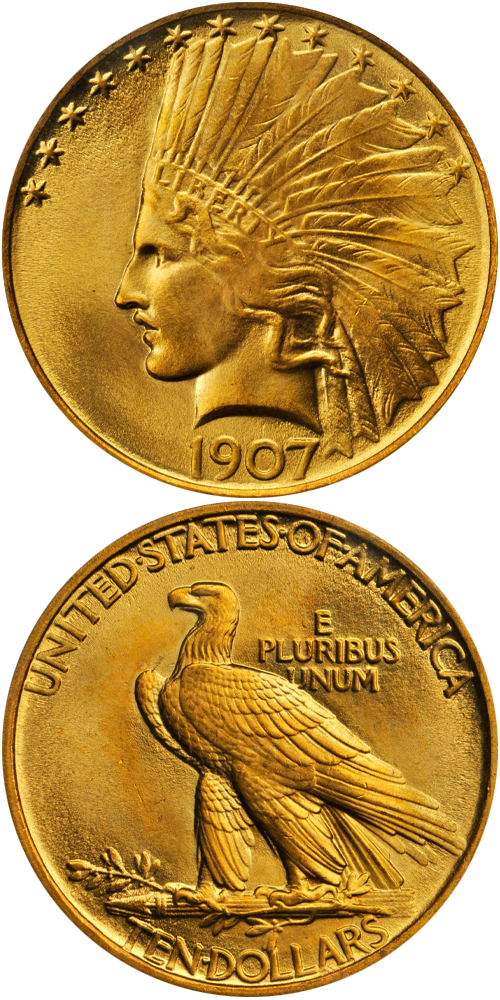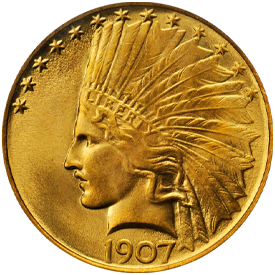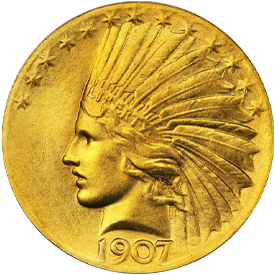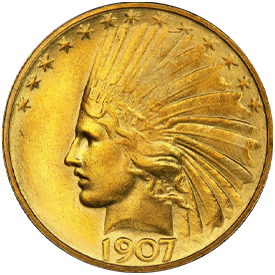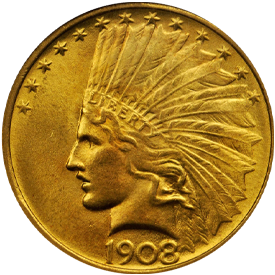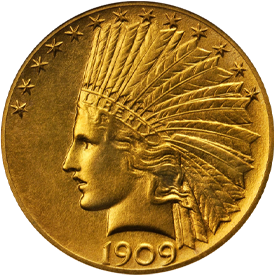After a 69-year run, the Liberty Head motif was finally replaced on the U.S. gold coins in 1907-08 as an outgrowth of Theodore Roosevelt’s expressed desire for a more “artistic” coinage. While the quarter and half eagle got Bela Lyon Pratt’s incuse Indian design, the design of the two larger coins fell to Augustus Saint-Gaudens who produced two outstanding designs – the $10 Indian and the $20 Double Eagle.
Nearly all $10 Indian coins can be divided into two main types – those without the motto IN GOD WE TRUST on the reverse made in 1907 and early 1908, and those with the motto to the left of the eagle made in the latter part of 1908 though the end of production in 1933. Matte and Roman finish Proofs were made in the early years as well, from 1908 through 1915.
In 1907 however, a few early pieces were struck in a higher relief, and these are referred to today as the “Wire Rim” and “Rolled or Rounded Rim”. Both of these also show “periods” before and after the words UNITED STATES OF AMERICA and TEN DOLLARS on the reverse.
There are a few tough dates in this series, among them the 1920-S, 1930-S and the very rare 1933, as virtually entire mintage of 312,500 pieces ended up in the melting pot leaving only about 30-35 examples for posterity. The two early 1907 issues are also quite rare due to either limited original mintage in the case of the Wire Rim, or few survivors due to melting in the case of the Rolled Rim.
